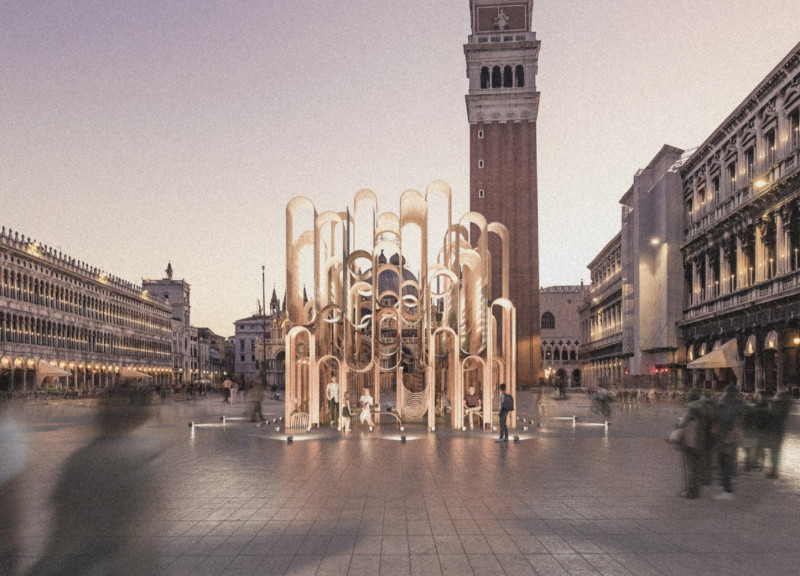5 key facts about this project
The design represents a celebration of the local environment and community, with particular emphasis on creating a space that fosters interaction and creativity. By utilizing timber as the primary construction material, the project aligns itself with sustainable practices that acknowledge the material’s ecological advantages while providing warmth and a natural quality to the built environment. The choice of wood not only speaks to a commitment to sustainability but also contributes significantly to the overall sensory experience of the space.
Functionally, the installation is designed to accommodate various activities, from casual social interactions to organized performances. The layout includes areas designed for standing, sitting, and lounging, all interrelated by a sequence of interconnected zones that allow for fluid movement. This thoughtful spatial organization encourages visitors to engage in diverse activities, enhancing the overall utility of the space. The architectural design merges artistic expression with functional needs, reinforcing the importance of public engagement in urban environments.
One of the unique design approaches of "The Symphony of Timberland" is its modularity. The project employs a modular structural system which not only provides flexibility in configuration but also reflects a rhythmic sensibility in its form. Curvilinear arches are integrated throughout the design, echoing traditional Venetian architecture while presenting a modern interpretation that adds dynamism and interest to the space. This attention to form and structure embodies the concept of a "symphony," creating an environment that resonates with movement and sound.
In terms of environmental considerations, the project showcases a sensitivity to its ecological impact. By prioritizing sustainable materials and thoughtful construction practices, the design aligns with a broader understanding of architecture's role in addressing environmental challenges. The timber structure allows for natural ventilation and light interaction, enhancing the comfort and experience of users while reducing reliance on artificial systems.
The integration of art and performance potential within the architectural framework marks this project as a significant contribution to public art. By inviting local artists to utilize the space for performances, exhibitions, or gatherings, "The Symphony of Timberland" becomes a platform for community engagement, fostering a sense of ownership and pride among residents and visitors alike.
In summary, "The Symphony of Timberland" stands as a notable architectural project that effectively merges contemporary design with the rich historical context of Venice. It embodies an approach that prioritizes community interaction, sustainable practices, and artistic expression within public spaces. For those interested in understanding the full scope of this project, including architectural plans and sections that provide intricate details, further exploration of the project presentation is encouraged. This comprehensive investigation into the architectural ideas behind the project will provide deeper insights into its design philosophy and outcomes.























